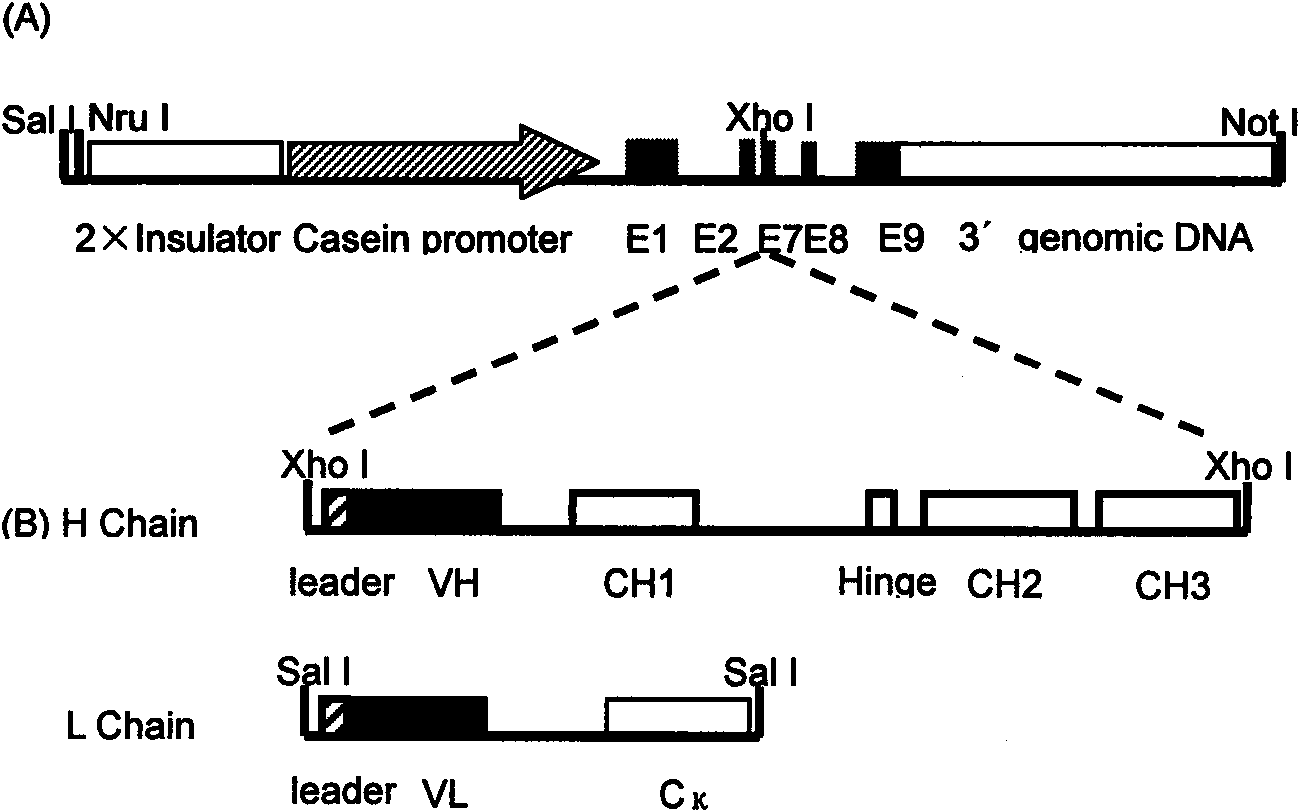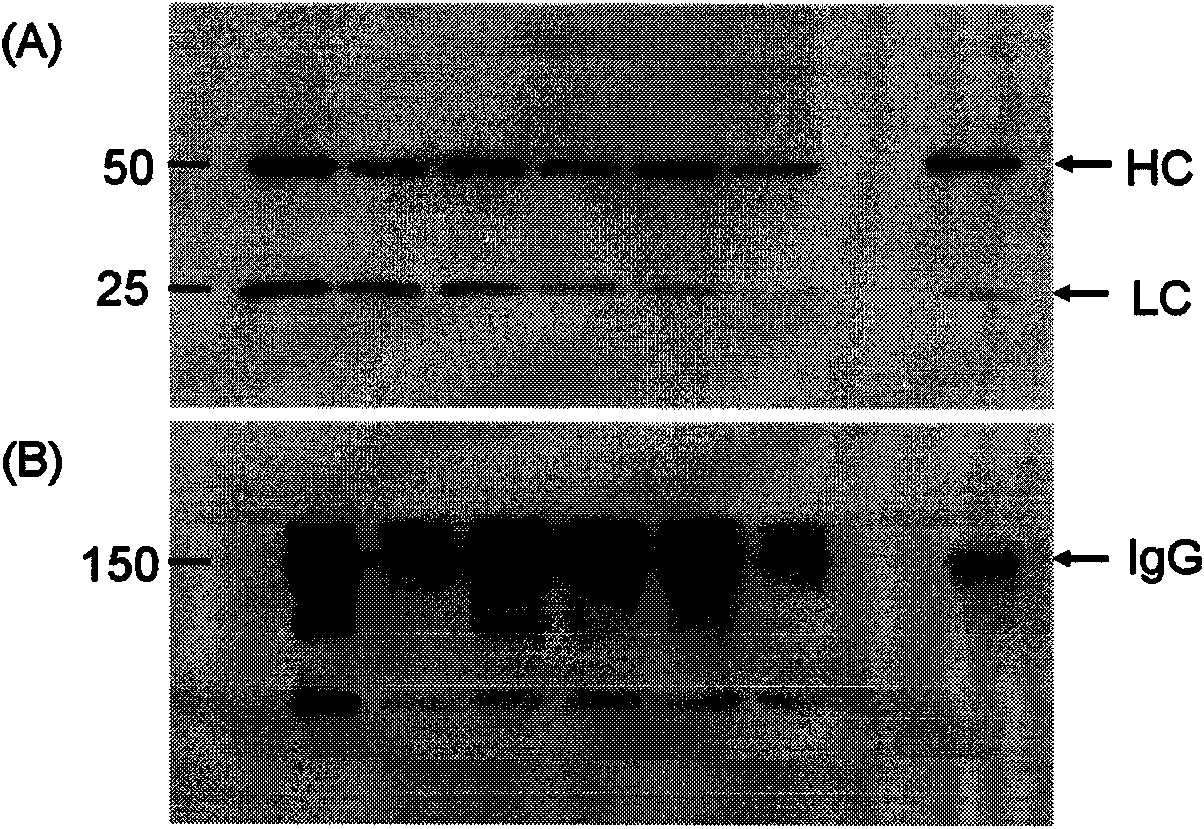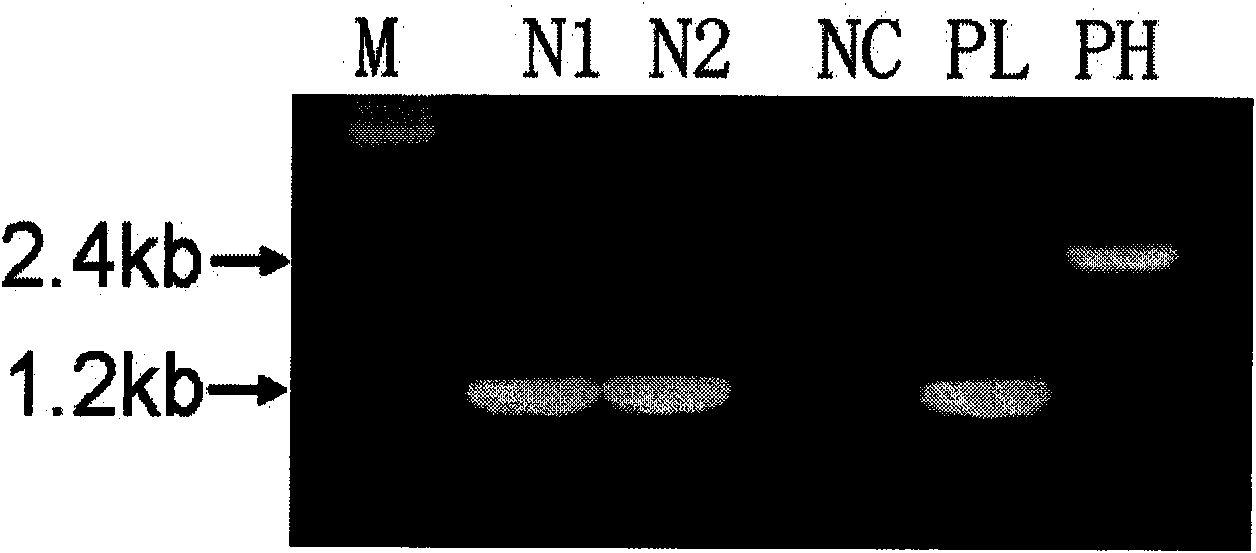Method for producing humanized monoclonal antibody using animal mammary gland bioreactor
A monoclonal antibody and antibody technology, applied in biochemical equipment and methods, botanical equipment and methods, cells modified by introducing foreign genetic material, etc., can solve problems such as expensive production cost, limited output, and complicated purification process, etc. Achieve low cost, high yield, significant economic and social value
- Summary
- Abstract
- Description
- Claims
- Application Information
AI Technical Summary
Problems solved by technology
Method used
Image
Examples
Embodiment 1
[0024] Example 1. Transgenic cells expressing human monoclonal antibodies
[0025] 1) Construction of human antibody mammary gland expression vector
[0026] According to the human immunoglobulin G1 light chain constant region sequence (GenBank number: AH002839S3) on GenBank, primers were designed and introduced into the BglII site in the upstream primer and the SalI site in the downstream primer (upstream primer LCF: 5'-CAGATCTAACTTAATTAAGGAATAGG-3 ', the downstream primer LCR: 5'-TGTCGACCTCTAACACTCTCCCCTGTT-3'), the human genome was used as a template for PCR amplification, after the amplified product was sequenced and verified to be correct, it was digested with BglII and SalI, and the digested product was recovered and connected to the same The modified pGEM-5Zf vector digested with BglII and SalI (the NdeI site of the pGEM-5Zf vector is introduced into a linker containing the BglII site, and the linker sequence is GTCATATGTTCCAGATCTCAGACATATGGT) to construct a pGEM-LC vec...
Embodiment 2
[0045] Example 2. Preparation of transgenic livestock expressing human monoclonal antibodies
[0046] 1) Preparation of transgenic cattle expressing human monoclonal antibodies
PUM
 Login to View More
Login to View More Abstract
Description
Claims
Application Information
 Login to View More
Login to View More - R&D Engineer
- R&D Manager
- IP Professional
- Industry Leading Data Capabilities
- Powerful AI technology
- Patent DNA Extraction
Browse by: Latest US Patents, China's latest patents, Technical Efficacy Thesaurus, Application Domain, Technology Topic, Popular Technical Reports.
© 2024 PatSnap. All rights reserved.Legal|Privacy policy|Modern Slavery Act Transparency Statement|Sitemap|About US| Contact US: help@patsnap.com










